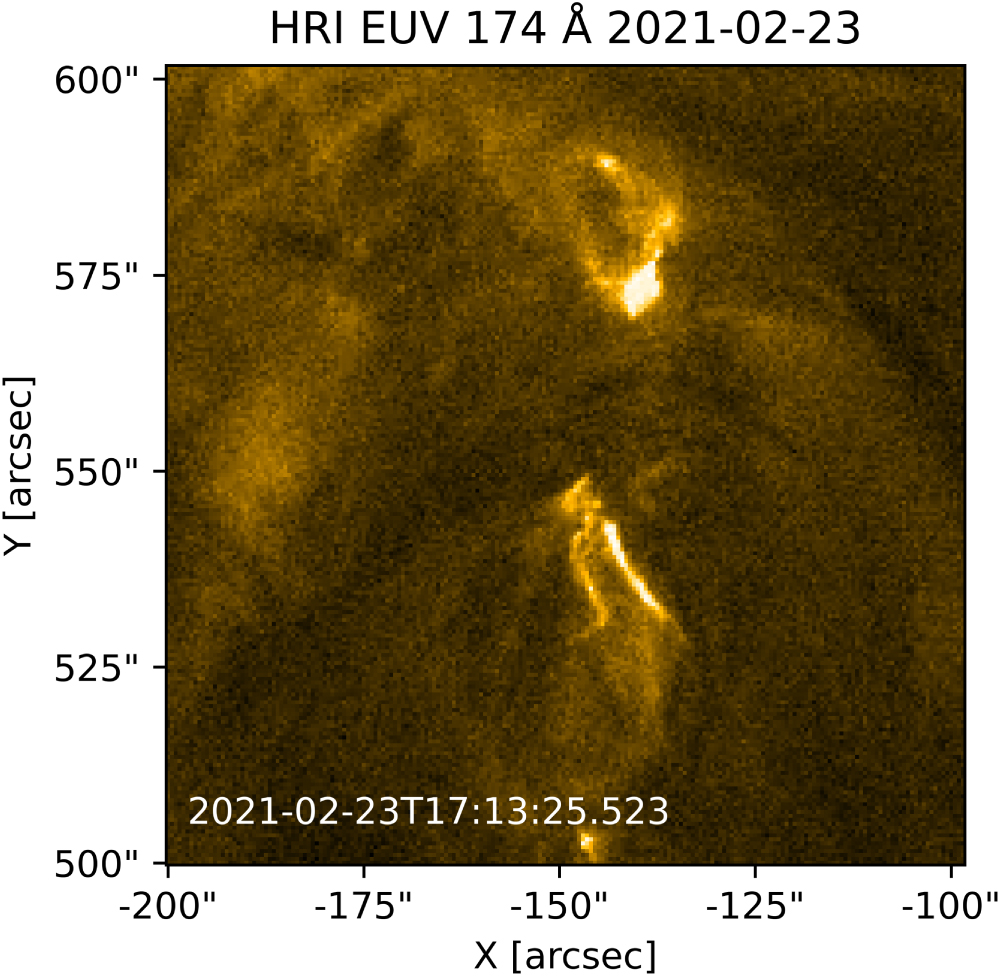New type of oscillations discovered on the Sun
The Extreme Ultraviolet Imager (EUI) telescope aboard the satellite Solar Orbiter was able to observe magnetic loops that shake back and forth very quickly. These vibrations are very small, but are ubiquitous and ever-present. Scientists suspect that it is these movements that heat the environment around the Sun to millions of degrees Celsius. By comparison, the solar surface is only a few thousand degrees in temperature.

Image of the oscillations taken by EUI. Credit: ESA/Solar Orbiter/EUI Team: CSL, IAS, MPS, PMOD/WRC, ROB, UCL/MSSL. (An animation of this figure is available.)
The Sun is dotted with magnetic loops. Now it was discovered that these loops oscillate back and forth continuously and very quickly. Some of the energy from the oscillations dissipates into the solar atmosphere, heating it. This may well explain the mystery of the solar atmosphere being much hotter than the solar surface. You would expect these vibrations to stop after a while, but as it turns out, the loops are driven continuously. Scientists suspect that the swirling solar material, from which the loops emerge, causes them to vibrate. This needs further investigation.
This discovery was only possible thanks to the EUI telescope which can take extremely sharp images in rapid succession. Other comparable solar telescopes cannot: either they are slower or the images are less sharp.
The Astrophysical Journal recently published the paper in which researchers from the Solar-Terrestrial Centre of Excellence and the Katholieke Universiteit Leuven describe this new discovery.
Reference:
Petrova et al., High-frequency Decayless Waves with Significant Energy in Solar Orbiter/EUI Observations, ApJ 946 36, 2023. DOI 10.3847/1538-4357/acb26a. Article in open access published on March 24, 2023: https://iopscience.iop.org/article/10.3847/1538-4357/acb26a
